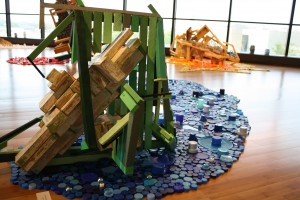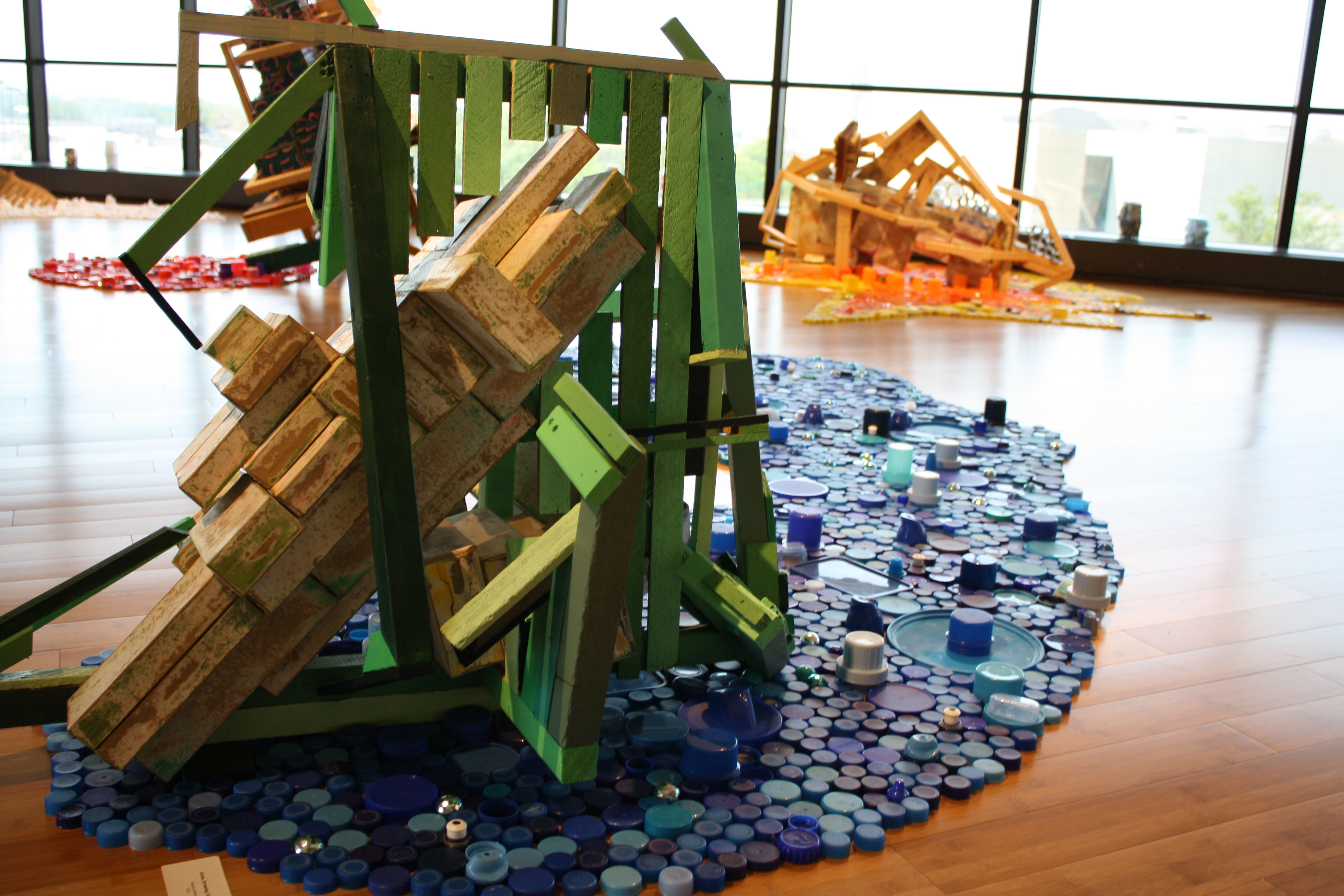
People with jobs and families may prefer to get in and out of campus as quickly as possible. But there are a variety of things to do and see between classes at Sinclair Community College.
Professor Derek Petrey, Honors Program Director and Modern Languages Coordinator at Sinclair, said in an email interview that every major study on success in college shows that students who are engaged in structured activities on campus do better than students who are not.
“College should be a place to help you expand your horizons, to connect with people who will influence you in a positive manner, and to challenge you to do your best,” said Petrey. “I see it happen every day. Working on these activities makes me a better professor and makes my students better students.”
There are many activities and events available to students throughout the school year, including:
Conversation Tables
Students who want to practice Spanish, French, German or Japanese will have the opportunity this fall when Conversation Tables return. Not only can students practice conversing in an informal setting beyond the classroom, they can learn about other cultures from native speakers.
Conversation Tables begin Sept. 1. Students can find information about hours and scheduling by contacting the Language Lab at 512-2228 or stopping by Derek Petrey’s office in Building 10339.
International Presentations
Sinclair’s monthly International Series returns Sept. 19 with a presentation on Singapore, a country that has never been covered before in the eight years of the program.
Program and ESL Coordinator, Paul Carbonaro said that the International Presentations are the best-attended grant-funded series at Sinclair.
“I believe that’s because people are interested in each presenter’s personal experiences of the country being featured: its climate, food and customs, its culture in general, its geography and history, and even its future,” he said.
Carbonaro said he would like to see more interest in those places that are lesser-known.
The International Presentations are arranged on a presenter-volunteer basis, with no strict guidelines for how each presentation must go.
“You can do anything within reason,” said Carbonaro. “We usually have music and food made by Aramark from ethnic recipes. Dancers are always good.” But some presentations have taken other forms, such as Jeopardy-style quiz games with buzzers. “The worst thing you could do is stand there and read statistics from a PowerPoint,” said Carbonaro. “People want the presenter to speak to them and engage them, not turn their backs on the audience for large amounts of time.”
Carbonaro believes that the main key to the program’s success is the one-hour format and the fact that every presentation is always scheduled for Wednesday from 12-1 p.m. He said this maximizes attendance and allows people to come and go between classes. At the end of every presentation there is a question and answer section that can last longer depending on audience interest.
“For one China presentation, we had 180 people and it lasted two hours,” said Carbonaro.
With the change to semesters, there will be seven presentations each term instead of eight. All presentations are free and open to Sinclair students, faculty, staff and the general public. The series always takes place in the basement of Building 8.
Open MIC and Other Proposed Events
The semester transition is going to do wonders for student engagement at Sinclair, according to Denny Wilson, Music and Liberal Arts major at Sinclair.
“Semesters are gonna bring a different connection to the place,” said Wilson, who also works as a media specialist at Sinclair’s Office of Student Leadership Development. “There’s a different kind of mentality it brings, going for 16 weeks instead of 10. You get to know your classmates better.”
Wilson has been helping plan student activities and events since last spring, when he hosted a series of Open Mic sessions in the basement of Building 8. The season culminated with a performance by Sinclair students in Courthouse Square.
“I really want there to be a symbiotic relationship between the music and theatre departments and our events,” said Wilson.
He also helped arrange the Summer Culture Film Series, which screened films adapted from the plays of William Shakespeare on Monday afternoons during the summer. Wilson plans to keep both events going in the fall, with another live performance in Courthouse Square tentatively scheduled for the beginning of the semester.
He hopes to continue the Student Leadership Presents Open Mic sessions on Thursday afternoons. He is also trying to convince Sinclair’s humanities department to help sponsor the ongoing Film Series, with possible “themed” movie days, focusing on philosophy and ancient civilizations.
Wilson is also planning a series of events designed to help Sinclair students become more environmentally conscious. He’s currently working with the Green Fellows, an environmentalist club made up of Sinclair faculty members and the City of Dayton to create a River Stewardship Club. Members would help monitor portions of the Great Miami River for pollution and erosion, map out canoe routes and family-friendly areas along the river for recreational purposes and promote environmental awareness at Sinclair and beyond.
“When I talk to people about these events, they say, ‘Why are you doing this? Nobody’s gonna come,’” said Wilson. “But if you don’t do it, you know nobody’s gonna come. So I’m gonna keep trying.”
Art Galleries
Students also have the opportunity to check out an array of artwork in the numerous galleries set up throughout campus. The works of students, faculty and professional artists are typically featured in five-week-long exhibits to promote the work of artists at all levels of development.
“I try to put together an exhibition calendar that reflects different approaches that relate to the type of things we teach here, but also reflects current trends in individual arts,” said Gallery Coordinator Pat McClelland.
This fall, the Burnell R. Roberts Triangle Gallery in Building 13 will be showcasing the Fine Arts Faculty Exhibition from Aug. 27 through Oct. 3. They will then display the work of artists Emily Trick and Erin Wiersma until Nov. 12. Finally, an exhibition of Joshua Almond’s work will run through Dec. 12.
With the exception of the Triangle Gallery in Building 13, all galleries are open to visitors as long as their respective buildings are open. The Triangle Gallery is open Monday through Thursday from 8 a.m. until 8 p.m., Friday from 8 a.m. until 5 p.m. and Saturday from 8 a.m. until 3 p.m.
McClelland said cameras are permissible, but backpacks, food and drink are prohibited. Touching the artwork is usually discouraged, though that ultimately depends on the specific exhibit.
“Some of it is tactile,” said McClelland. “There’s some work that actually the artist invites you to touch it.”
McClelland estimated that up to 12,000 people visit the galleries each year. The galleries are centralized in Building 13 for the convenience and enjoyment of the art students who pass through that building, but a wide range of students stop by, from English students writing papers, to Philosophy students attempting to analyze the work.
Still, many are unaware of the Art Department’s presence in Building 13, according to McClelland. “The fact that we’re over here on the fourth floor, we’re a little isolated from the main body of campus,” he said. “So, sometimes people are surprised, they’ll come up here to find the snack bar and they are surprised that there’s even an art gallery.
Student work is featured in many different locations, including corridor and walkway galleries. The Hypotenuse Gallery on the third floor of Building 13 shows mostly student work, but will occasionally feature professional work.
In addition, the permanent African Art Exhibit in the library was donated by Mr. and Mrs. Peter Capone in 1979. The donated collection features African art from around the turn of the last century.

